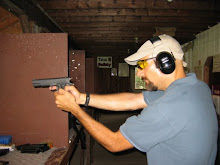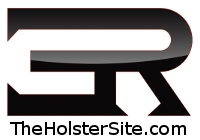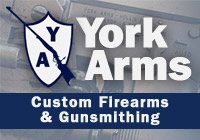Commenter, bloggershoot attendee, purveyor of fine toys, and all around great guy Wally sent me the following picture a while back:

Proto-boolitts!
He followed it up with a quick blurb in an attempt to kick-start me into reloading:
Jay,
I snapped a pic the other day and thought you may want to use it for a gun porn pic - or not, since there are no guns in it. I know you aren't into handloading (yet?) but I'll be glad to help get you up and running when you decide to make that leap.
I got back into handloading in October of 2008. The pic is my consumption since then. That turned into over 10k rounds without having to scurry to every wal mart in the county :)
I asked if he'd be interested in writing a guest post on the basics of reloading, and he was kind enough to oblige:
A primer on reloading -
Jay asked if I’d guest post a quick overview on reloading. While I am an avid reader here, I never figured I’d get to give back – so I jumped at the chance. Thanks Jay!
Reloading is another facet of the shooting hobby. Not reloading as in filling magazines or stuffing cylinders – reloading as in handloading, turning the spent cartridge cases into fresh ammunition. Reloading is a pretty straightforward process with three basic steps.
The first operation is to resize the case. Upon firing, cases expand. When cases are ejected they tend to get dinged up. Resizing restores the cases to perfectly round and slightly undersize diameter. In some situations, cases tend to stretch from the pressures of firing and they must be trimmed to length.
Next, the primer is replaced. The primer is the little button on the back of the case that gets the cartridge ignited. This is a very simple press in and press out affair. Some cases have a little ridge to retain the factory primer, and that ridge also needs to be ironed out the first time the case is reloaded.
Finally, the round is assembled. The resized and primed case is charged with a suitable amount of a suitable smokeless powder and a bullet is placed atop. One final calibrated squish puts it all together into a loaded round of ammunition. There are many volumes dedicated to load recipes, but this is a pretty high level post so I'll skip getting into exact details for now.
Why reload ? Some enjoy having ammo available without driving to every gun store in the county hoping to find their favorite load - or any ammunition for that matter! If you shoot .380, remember what it is like to go a year without finding ammo on the shelves?
Some folks like to reload to find the perfect combination to wring out the last bit of accuracy from a firearm. When reloading, you aren't limited to off the shelf combinations. Try different bullet weights and profiles, types of powder, powder charges, cartridge length – and some combination is all but guaranteed to deliver some great groups at the range.
Others simply must reload if they wish to shoot some old iron in long obsolete calibers. Since this is Jay's blog I'll use the 11mm Mauser as an example. Empty 11mm brass is a bit pricey at $3 each, but the brass can be loaded many times over. Subsequent reloads would run about 35 cents per round.
And that leads us into another reason to reload – cost savings! It would be pretty reasonable to be producing 45 ACP for under $10 per box. 9mm for $8, 357sig for $9, 44mag at $11, .223 at $4, and 6.5x55 are about $8 per box by my recipes. Most of those prices are less than half of what you would be paying for loaded ammo, if you are lucky enough to find your preferred flavor.
But like everything, there is a trade off. Reloading does take time. A basic single stage press can produce 200 rounds an hour or more. Fancier presses can triple that output. Unfortunately, reloading equipment isn't free either but it does last darn near forever. My primary press is a RCBS single stage that I got as a hand me down from dad. I have no idea how many rounds it has produced in total, but since October of 2008 I have been saving empty reloading component packages, as seen in the picture. This most basic setup has produced over 14,000 rounds in two years, just an hour or two at a time.
I know there's a lot of folks out there who reload - and a good number who, surprisingly enough, don't. I'd love to get into it, but haven't taken the plunge right now for a few reasons. First, I need the proper set-up. I've got plans for a corner of the attic to be turned into the gun room, with a 10' bench for reloading and cleaning supplies - this will get me away from overactive kids, too. Secondly, there's still just enough pictures of "reloading gone wrong" to keep me from jumping in - at least until I've had more time to practice under qualified supervision (like Wally!). And lastly, right now I'm not shooting enough that the savings in costs outweigh the expenditure of time - I figure that will change as the kids get older and I have more time...
Those of you that reload, what's your main reason for doing it? Cost? Crafting the perfect handload? Volume? Those that don't, why not? If you shoot any significant amount the savings are substantial - although, what I've heard from those that reload is that you don't actually save any money, you just get to shoot a whole lot more. One of the things I'm interested in doing once I get into it is crafting specialty rounds for certain shooting types - like .45 ACP lead round-nose bullets for shooting in the indoor range, or really hot .357 Magnums for long range shooting with the model 27.
Man, with all this talk, I think I might just pull out the box 'o' supplies and take inventory... Thanks wally!
That is all.







12 comments:
Yes, but with Wally's assortment of firearms, 14,000 rounds is an afternoon's shooting.
I reload because I'm too lazy to go to the store every time I shoot a few rounds. It's shoot....reload. I get several hundred rounds before needing more supplies. Pure D lazy.
Started back in the '70s for economic reasons (44 mag was ~4 hrs pay!).
Over time, the process has evolved to achieve the best .308 round that can be found, to, like larry, beat the laziness of going to a store. Sometimes, in the .380 case, it was just to have ammo at all (that problem's fixed ;^)
The ultimate reason to have stocked powder, primer, & bullet molds is as a hedge against the possible "unavailability" of ammo...
i reload for my 9mm.
The reasons I got into it was:
a) not allowed to use jacketted rounds to engage steel on the range and no local source of non-jacketted rounds.
b) i'm using 38 super mags in my 9mm to overcome feed issues i need a longer OAL than is available in 'off-the-shelf' packets
c) cost
d) reloading has also allowed me to tweak my loads to reduce recoil but still allow the gun to function correctly
I've had some challenges with my reloads over time (blogged under gun stuff if you're really interested) but on the whole i enjoy having ammo that i've created to meet my specs.
I think you should give it a go JayG
I'd love to get into reloading - initial setup costs are the big hangup. Or I'm using that as an excuse for laziness - not really sure.
When my husband, Chia Pet, was actively participating in shooting competitions, he did hand-reloading because he wanted to make sure EVERY bullet was perfect. (His brother went to gunsmithing school, so the knowledge/tools were close at hand.) Chia Pet stated that there were too many uncertianties regarding store-bought, and Mr. Mechanical Engineer does not like uncertianties in his competition ammunition.
A word of warning regarding primers: Don't load the "live" ones in a carpeted area. They're nearly impossible to find if you drop them, and they don't play well with vacumm cleaners...
I started reloading back in the 1970s so I could afford to shoot more. Started with a basic LeeLoader in .38 Special. I was shooting NRA Hunter's Pistol Silhouette matches then. Without the loader I couldn't have afforded the ammo needed. Later shot NRA Highpower Rifle and needed to reload .30-06 and .308 to afford that too. Bowling pin shooting followed and required a lot of reloaded .45 and .41 Magnum rounds. By then I had a Lee Turret press.
Having reloads on hand, or the components to make them, is comforting when there is a shortage of ammo in the market. I reloaded enough .38 Specials in the early spring this year to last till next spring or summer. Also made some .41 Magnum and a bunch of .45 target loads around the same time.
I also like to hunt with my own reloads. Taking game with a handgun or rifle round I made
adds another dimension to the experience.
#1 Cost and Volume
#2. Never having to fear buying a gun in an "odd" or expensive caliber.
#3. Just like it.
FYI Wally talks about his love for Blue Dot...WOW he warn't joking!
I'm kinda like that with Red Dot...tho I prefer to buy it in the lovely 5lb jug!
Cost and Volume. I don't particularly enjoy reloading, but I do enjoy shooting 9mm for about $11 per 100 rounds. I shoot between 5,000 and 10,000 9mm a year, so the cost savings is significant. I may get a bit more in to reloading for reloading's sake as I get in to rifle shooting.
I load for all of the above. Tons of blasting ammo for the hungy guns. Accuracy loads for the match rifle. Inexpensive IDPA pistol fodder. Keeping old guns in obscure chambersings making noise. Extra-wimpy .44mag loads. And of course having an ammo supply that doesn't rely on commercial sales!
Some days when nothing is going right, I am happy to just prep some brass and know that at least something was accomplished !
Weer'd, I figured it best to use up the singles before tapping the kegs.
I reloaded in the 60's and early 70's. Primary reason was economic, agree with the statement that. "You don't save any money you just shoot more." Caution, attention to detail is essential. You don't want any oops when reloading. I am tempted to start again because, I can't find mid range wad-cutters for my NM.
Yep, all of the above reasons...
I bought a single stage set up for $60 off Craigslist and am currently focusing on middle of the road power/recoil offerings so I can maximize comfortable shooting sessions.
My grandson also can shoot anything I own and no longer blinks at the higher recoil of hotter rounds.
Reloading lets you tailor rounds to new shooters so they get the shooting bug and grow into recoil fiends!
Post a Comment